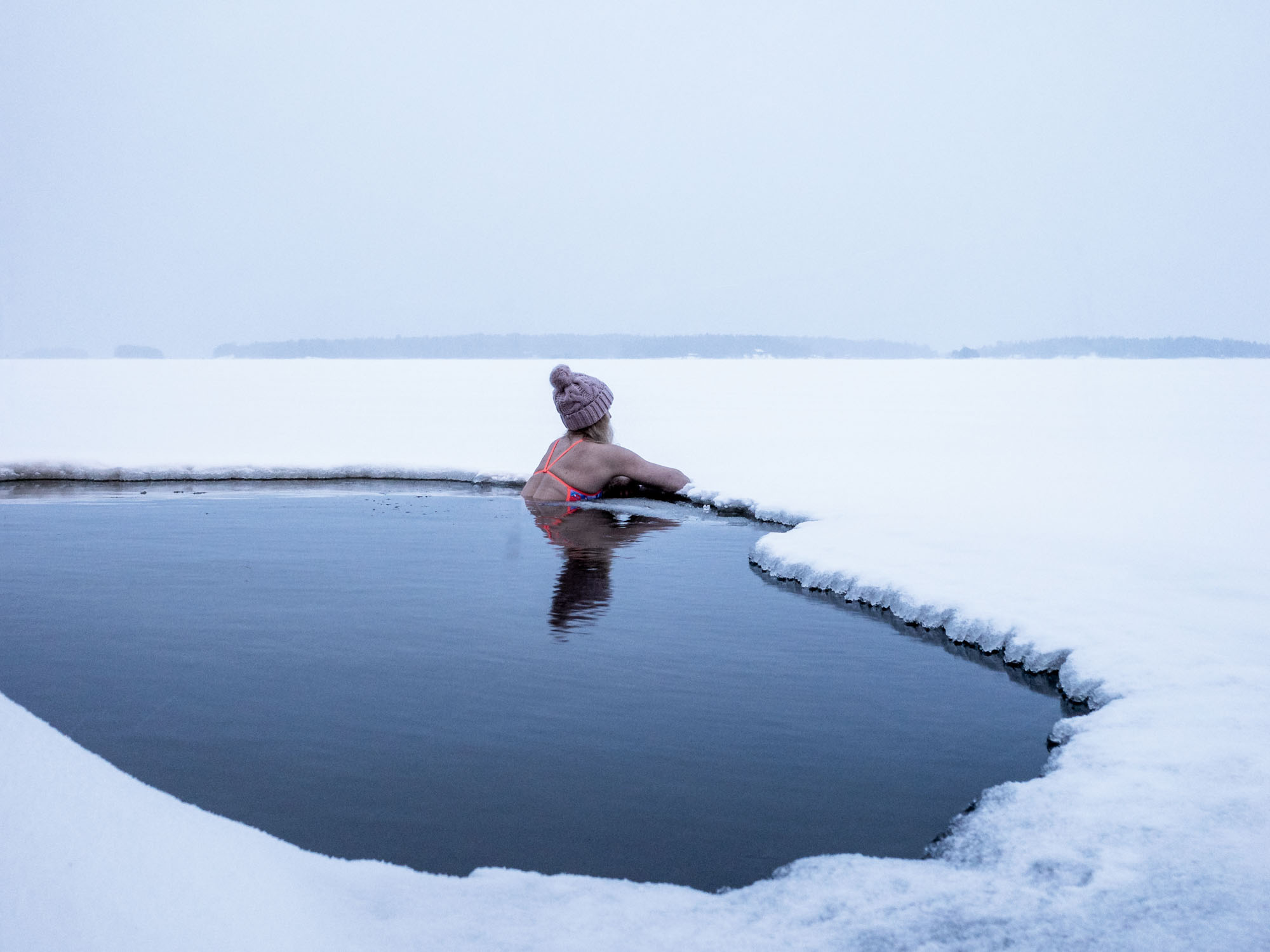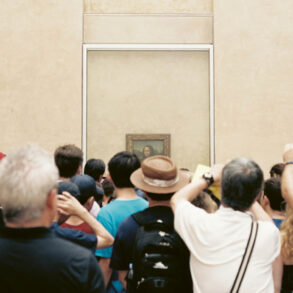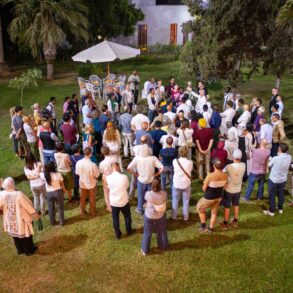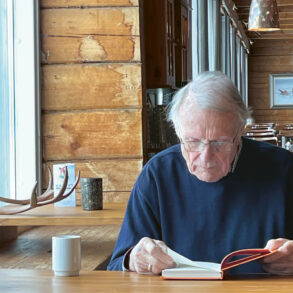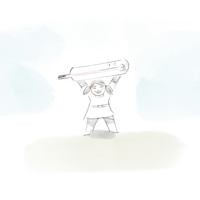Through an intense weaving of cold exposure, generation of inner heat through breathwork, and sheer willpower, the ‹Ice Man›, Wim Hof, has dazzled scientists in changing our understanding of what is possible with human physiology. Although it might not be broadly recognised, Anthroposophical Medicine works with something similar as a main focus – ‹warmth›. Dr. Adam Blanning interviewed by Charlie Cross.
First of all, Dr. Blanning, congratulations on your new appointment to be one of the new heads of the Medical Section here at the Goetheanum!
Thank you, Charlie. I look forward to these new adventures. It’s exciting to think about collaboration and sharing on a more international level.
As I’ve been trying to understand what’s going with the Wim Hof Method, it occurred to me that Anthroposophical Medicine has a really wonderful way of describing a lot of these processes that he’s working with – heat, cold and the will. I wonder, how do you make sense of what’s happening here?
It’s really fun to look at Wim Hof’s work and the attention that he’s garnered, because it doesn’t quite fit the usual paradigm of what we’re capable of. He’s doing things with his body and physiology that most people would say are not possible. And If you look at Wim Hof’s work, intention and enthusiasm are really central. Within the understanding of Anthroposophy and Anthroposophical Medicine, warmth is a core aspect of how of how the I – that spiritual kernel of our individuality – is active in our body. Something that really helps illuminate his work is a recognition that warmth is a kind of bridge that can go all the way from very standard measurements of warmth, to social warmth, to emotional warmth, to spiritual intention and enthusiasm. And in the Anthroposophical picture, those are all the same thing. So warmth is a bridge from physicality to spiritual activity. And clearly Wim Hof brings great intention and enthusiasm to everything that he’s doing. He’d like to change the world with this method, one ice bath at a time.
There are lots of ways that you work with warmth as an Anthroposophical Doctor. Would you mind introducing us to some of the some of the important things that you focus on or prescribe?
Absolutely. An important place to start is just the recognition that warmth can be an important part of how we deepen and transform. There’s lots of fear of warmth, actually, and fear of inflammation generally. If you see fever, if you see inflammation – that’s risky. It should be stopped. It should be suppressed. It’s very, very common that, if you walk into a medical facility and you have an elevated temperature, one of the very first things you might be treated with, maybe even before being evaluated, is something to bring your temperature down. This is the case even though there’s really good research to the contrary – the American Academy of Pediatrics put together this big guideline about fever, that allowing the body to create and direct and sustain warmth as it needs to helps us heal faster. We get through infections better. If you have a high warmth state, then your immune system is better able to fight off bacteria. There are studies that show that the increase of viruses slows down when the temperature is high. So if you look at the research, it shows that we shouldn’t be blocking that process routinely. And there’s great work that’s been done within the Anthrosophical Medical world of trying to educate people about this – there’s something called Fever Friend, which is an app you can get for your smartphone that will guide you step by step through a situation and tell you if this is an elevated temperature that you should be concerned about or not.

So that’s a starting place – allowing some understanding for warmth and being open to the little bit of risk. I don’t even know if I want to say it’s risk. Maybe rather – being open to the space for things to be changing in a dynamic way. Most medical approaches are about controlling a process, but warmth is something that really loosens and reorganizes and allows us to be in a different place. I will say that warmth in early childhood is particularly important because it’s very clear that warmth is a way that children feel more comfortable in their bodies. It’s essential for immune development. There are studies showing that children who have autistic behaviors actually have those kinds of symptoms or patterns go down in a very observable way when they have a strong fever, and they actually last after the fever – a week later, you can see that things are better. And that’s not because it’s suppressing those behaviors – I think it’s really helping someone feel more comfortable in themselves and in their body.
What a beautiful image – it’s almost a holy fire to working through the body.
Gosh. Absolutely.
So you would understand that Wim Hof is kind of creating a fever in his body, or otherwise somehow taking conscious control of this capacity to generate warmth.
His descriptions of being able to be in an ice bath for, let’s say, 60 or 90 minutes and not have his core body temperature drop at all, means the amount of warmth that he is creating or facilitating is phenomenal. I haven’t seen anything about him doing the same kind of exercise when he’s not in an ice bath, but, gosh – if he was in a regular room with a regular temperature and created that kind of warmth, maybe that would be too much. But I would say it really has a hugely transformative activity. He’s able to really show that it’s possible to be working in a conscious way with the less conscious activities of our body, because usually we don’t decide whether we should warm up or cool down. That’s much more on an unconscious level. It’s carefully regulated, but most of the time we don’t sit down and decide what we’re going to do. We’re carried through that process. And the way he describes how autoimmune illnesses can change, or that Diabetes and high cholesterol can be improved – I think that’s because he’s able to show that you can take hold of warmth and have this kind of transformative activity. It’s pretty impressive. It’s also so striking just how enthusiastic he is about life. He seems very positive that life is a very good thing and you can change it and we should really enjoy it. So that’s the enthusiasm part of warmth.
This could open up a whole domain of speaking about the power of the mind. I heard it described that the placebo is one of the most studied medicines in the world and maybe the most effective, or something of the sort.
Well, there’s research showing that the part of the brain that registers physical warmth is the same part of the brain that registers experiences of trust and kind of social-moral warmth as well. So if we think about this part of the brain, the insula, being a receptor for or focusing on those kinds of inputs, clearly that perception also then has an activity within ourselves. And so I think that shows where interest and enthusiasm does kind of waterfall directly over into our metabolism, into our immune system. I mean, the whole field of Psychoneuroimmunology – that your thoughts and behaviors have an effect on your nervous system, which has an effect on your immune system – that’s showing those bridges.
One of the things that was striking to me is the way that Wim Hof was speaking about his method as almost a panacea for the ‹diseases of modernity› – that in the last 100 years our physiology has changed a lot and led us to all these sort of new, difficult to deal with disease states, autoimmune diseases and cardiovascular diseases. So maybe there’s something about being human today that his work is geared towards.
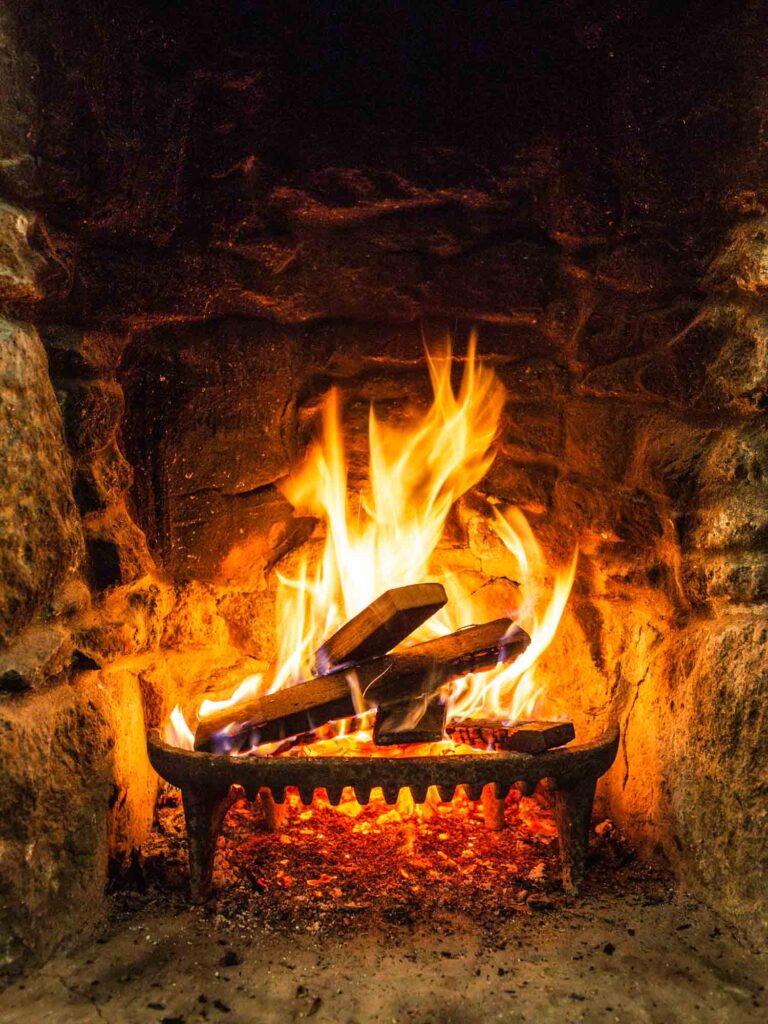
Absolutely. There was a study that came out a couple of years ago that shows that we’re actually cooler now than we were 150 years ago. This was based off some really interesting research that was done looking at veterans of the American Civil War. In the 1860s and 1870s, their body temperature was measured, and as they got older, their body temperature went down. And then another group was studied in the 1960s and they could see that as they got older, body temperature went down, but their starting place was cooler. And then if you look at more recent measurements, the last decade or two, again, as you get older, body temperature goes down, but the starting place is, again, lower. So there is an estimate that, at least in Fahrenheit, a true average body temperature is about 97.9. It’s not 98.6. And they’ve they’ve even been able to make rough estimations of how much body temperature has dropped per decade.
And it’s true that if you look at the kinds of illnesses that we have, they tend to be chronic illnesses. It’s not so often that people are really suffering from strong, acute inflammations that are happening in the moment. If you look at something like a sore throat with a fever, some kind of big inflammation is there – an element of warmth. And if you look at allergic or autoimmune illnesses, very often there’s inflammation, but not the element of strong warmth. If you get asthma, you have inflammation, but you typically don’t have a fever. Same with eczema, you have inflammation, but no fever. And so there has been a shift. We just function in a cooler realm and in an experience of more chronic processes that go for years or even decades, rather than these very strong inflammations. So that’s probably part of why what he’s doing is exciting and people really feel there’s some truth in it.
My understanding is that mistletoe also creates a fever in the body. I’m wondering what sort of spiritual processes go along with that. Do you do you notice people’s self or spirit or I strengthening, changing through that process as well?
Well, mistletoe is amazing – it is a treatment that is stimulating and facilitating us to increase our own warmth and to create inflammation. It’s really one of the only things I can think of that, when I’m describing it to somebody, the side effects and the desired effects are the same thing. Usually you give a whole list of concerning things to look for. Here, it’s basically the same. Mistletoe comes into the body and has a strong property of being something Other, something outside of us. In that encounter, I think it awakens our immune system. It awakens our I. The immune system is really an expression of a pathway for the I to be active, to say that something doesn’t belong in me. So it creates inflammation. When people have been doing mistletoe therapy for a time and then you try to enlarge the conversation a little bit to say that it’s something that helps us to define ourselves on a treatment level – what’s a healthy cell and what’s a cancer cell and what belongs inside of me – that’s pretty clear. That’s really the main goal for a lot of people with mistletoe therapy, but people also find some kind of clarification or new steps maybe in terms of habits or how they interact with other people. Sometimes people have specific experiences, that they will say after a time, «I feel like I can really let go of that. I don’t have to be carrying that around anymore.» Or it can be annoying to some of the people around them, because it can be convenient to have somebody take on something that doesn’t really need to be theirs. And sometimes people really awaken into that in many areas. There’s a stronger experience and appreciation of, «What really belongs to me? What’s a core part of me and what’s not?» It’s quite beautiful.
So maybe we could understand the strong exposure to the cold as a similar sort of challenge that somebody is willingly taking on, maybe in smaller doses.
Right. I think it is. Warmth has this overlapping effect – you can hold a warm cup of coffee and it will make you be more socially receptive to other people. There are fun studies about that. Or you can hold a cold pack, and it’s more likely that you’ll choose a present for yourself, as opposed to a present to share with a friend. So we can receive warmth from the outside, but when we can self-engender warmth, when it’s something that we create, that’s where the potentiality of this really increases. Mistletoe is not given to you as a hot injection. It’s not hot fluid running into you that makes you warm. It’s something that stimulates you to increase your warmth. And so I think for Wim Hof and these very strong cold exposures, the same is being asked of you. He talks about how it might seem impossible, to just start with 15 seconds of cold water at the end of your shower, and over time it will build up.
I was thinking about how Anthroposophy describes Ahriman as being a cold influence, and how in some way, we could think about these chronic illnesses as a manifestation of this Ahrimanic influence, making us feel frozen or sclerotic. And so perhaps we need a sort of fiery response to that coldness everywhere.
Yes, I think that’s everywhere – the cooling aspect of materialism. There’s definitely this viewpoint that material is the most important thing. This is certainly so in the medical field where we are just physical bodies, kind of machines, and the way to approach and know someone is to work on that level. What’s fascinating there is that it is actually trying to eliminate the space for our own participation in the healing process. Because I think as technology increases and the kinds of very complex assessments increase, it’s all being done to us. But it’s very hard for you yourself to find a place of healing and participation in there. So, I do think this hardening emphasis on materialism is very prevalent, and I think we do need warmth to meet it and transform it. And I think that people are hungering for that.
I’m wondering if there’s anything that you want to share or point people to as a conclusion.
Well, just thinking about the experiences of the last couple of years – fear has a cooling effect. If you’re really scared, you will get colder. Your blood will pour more into the core of your body, and you will get stiff and protective on the outside. Steiner speaks specifically about how transformative enthusiasm and interest are, not just on the level of our individual physical health, but really in terms of the health of the whole evolution of human beings and the health of the world and the cosmos. And so I really think it’s essential that we are self-defining and speaking our truth. We’re also really cultivating interest and trying to find the ways that we love the world and we’re interested in being in the world, because that’s the whole side of warmth that we’re bathed in all of the time. I actually think that warmth is much, much bigger than what we can measure with the thermometer, though it’s by dipping our toes into physical warmth that we can see and recognize it.
Cover Image Mika via unsplash

